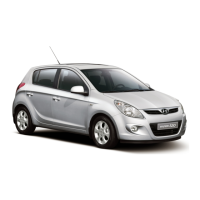INDEX - VICS (VEHICLE INSTRUCTION CARD)
HYUNDAI VEHICLES
Page Vehicle Details
1 Index
n/a
2 Supplement (Electronic Parking Brake, etc)
n/a
3 i10
5 seats / 5 door hatchback
4 i20
5 seats / 3 door hatchback
5 ix20
5 seats / 5 door hatchback
6 i30
5 seats / 3-5 door hatchback / estate
7 i40
5 seats / 4 door saloon / 5 door estate
8 Kona
5 Seats / 5 door SUV / 2x4 or 4x4
9 Tucson
5 Seats / 5 door SUV / 2x4 or 4x4
10 Ioniq
5 seats / 5 door hatchback hybrid
11
12
13
14
15
16
17
18
19
20
INDEX PAGE 1












